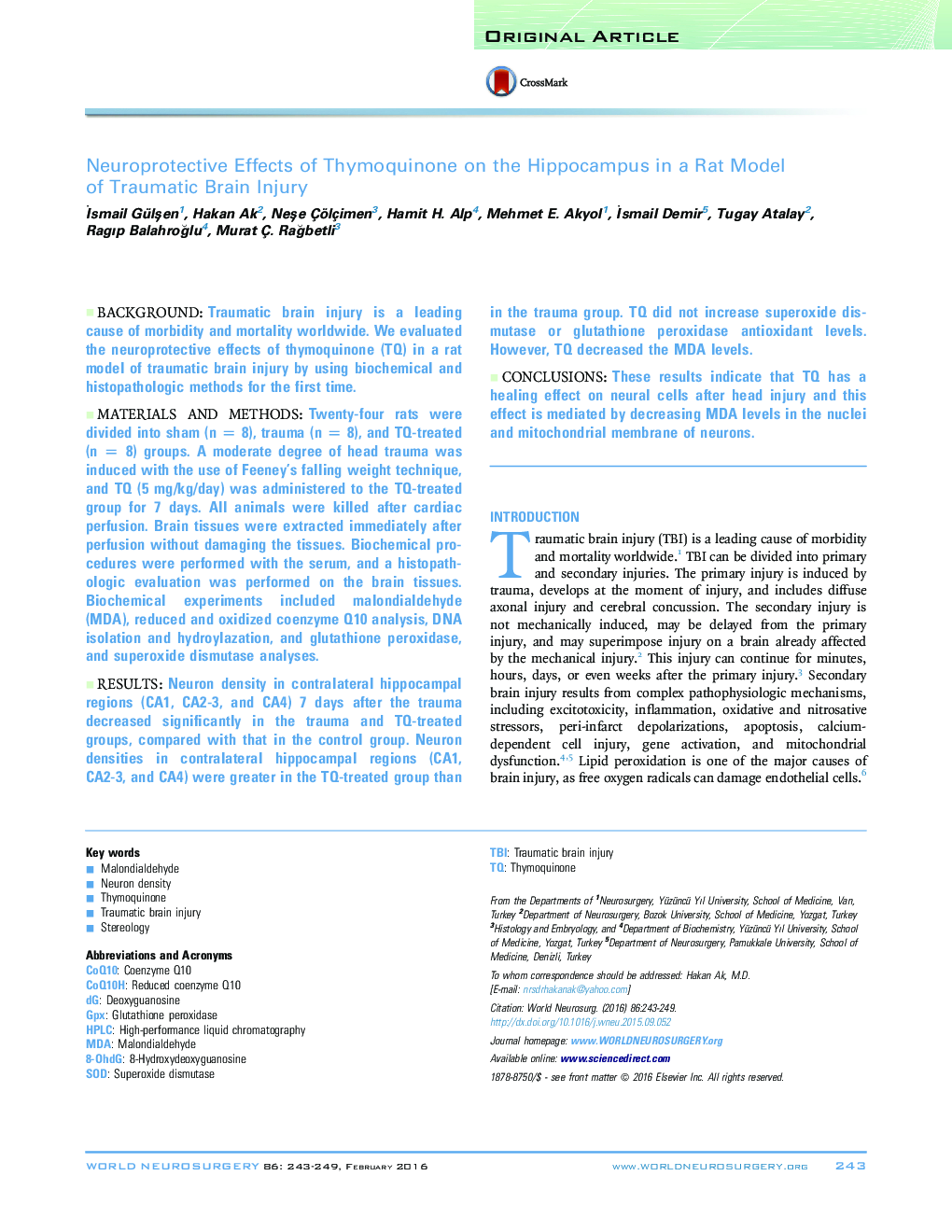| Article ID | Journal | Published Year | Pages | File Type |
|---|---|---|---|---|
| 6044735 | World Neurosurgery | 2016 | 7 Pages |
BackgroundTraumatic brain injury is a leading cause of morbidity and mortality worldwide. We evaluated the neuroprotective effects of thymoquinone (TQ) in a rat model of traumatic brain injury by using biochemical and histopathologic methods for the first time.Materials and MethodsTwenty-four rats were divided into sham (n = 8), trauma (n = 8), and TQ-treated (n = 8) groups. A moderate degree of head trauma was induced with the use of Feeney's falling weight technique, and TQ (5 mg/kg/day) was administered to the TQ-treated group for 7 days. All animals were killed after cardiac perfusion. Brain tissues were extracted immediately after perfusion without damaging the tissues. Biochemical procedures were performed with the serum, and a histopathologic evaluation was performed on the brain tissues. Biochemical experiments included malondialdehyde (MDA), reduced and oxidized coenzyme Q10 analysis, DNA isolation and hydroylazation, and glutathione peroxidase, and superoxide dismutase analyses.ResultsNeuron density in contralateral hippocampal regions (CA1, CA2-3, and CA4) 7 days after the trauma decreased significantly in the trauma and TQ-treated groups, compared with that in the control group. Neuron densities in contralateral hippocampal regions (CA1, CA2-3, and CA4) were greater in the TQ-treated group than in the trauma group. TQ did not increase superoxide dismutase or glutathione peroxidase antioxidant levels. However, TQ decreased the MDA levels.ConclusionsThese results indicate that TQ has a healing effect on neural cells after head injury and this effect is mediated by decreasing MDA levels in the nuclei and mitochondrial membrane of neurons.
